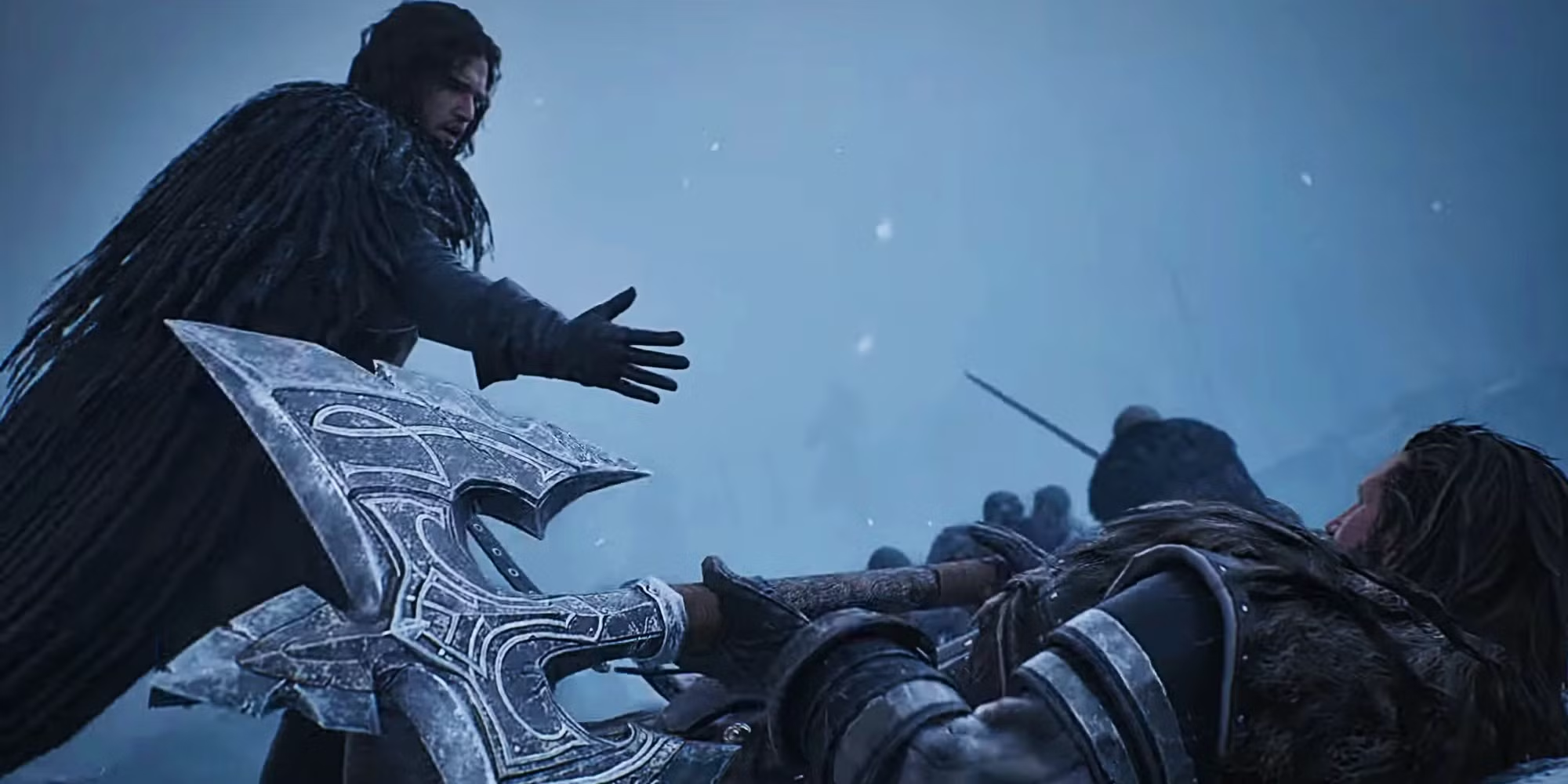Have you heard of Game Transfer Phenomena? It’s the habit of taking video game experiences into the real world. And while scientific research into the process is still relatively thin on the ground, I bet you’ve done it yourself. I know I have. Every shopping mall air vent is a Batman stealth takedown opportunity. Every rooftop is ripe for Nathan Drake-esque traversal. Every viewing of Game of Thrones incurs an “imagine if Dark Souls did something like this” piece of commentary. With Elden Ring, it sort of has.
Because while crafting the latest of FromSoftware’s typically dark, twisted and hard-as-nails action roleplayers, Hidetaka Miyazaki and his team sought the creative services of the A Song of Fire and Ice author George RR Martin. A Song of Fire and Ice, of course, was adapted into HBO’s A Game of Thrones fantasy drama series. “I have some good memories of those initial discussions,” says FromSoftware’s creative director Hidetaka Miyazaki in an interview with Edge magazine. “[George RR Martin] actually knew about the Dark Souls games. I knew immediately from talking to him, it just became apparent his skill and his passion for the fantasy genre, and for games as well.”
World building
Key Info
Game Elden Ring
Developer FromSoftware
Publisher Bandai Namco
Platforms PC, PS5, Xbox Series X
Release February 25, 2022
Despite tuning into all three available three-hour demo sessions during Elden Ring’s closed network test weekend on PS5 late last year, I felt like I barely scratched the surface of its open-world fantasy sprawl. This is clearly the most fluid and explorable realm FromSoftware has ever built – one packed with enemies, dungeons, non-hostile wildlife, and foragable resources, in a mix that more closely reflects the likes of Skyrim than its spiritual forerunners in Dark Souls, Serkiro, and Bloodborne.
Still, unlike anything found in Elder Scrolls games, Elden Ring appears to replicate the Souls series’ loose, story-lite narrative structure, whereby in-game storytelling is told mostly through item descriptions, item placement, circumstance, and the player’s own interpretation of all of the above. As such, Miyazaki says he and his team could in turn utilise George RR Martin’s creative input to its full potential – that the esteemed novelist and guiding hand of HBO’s Game of Thrones wasn’t brought in to write Elden Ring’s narrative, but instead to help steer its story elements from a more foundational standpoint.
“Early on, we established a very good level of respect between each other, both in our personalities and the sort of work that we do,” continues Miyazaki. “And this was really important in establishing that foundation for the game, because Mr Martin respected the fact that we didn’t want him to write the game’s story or the in-game text. We felt like that would actually limit his creative output, and if it was limited to something that was already a game or already a concept in this way, then it would limit the inspirations we could possibly get from him.”
“So we established very early that he would be writing that foundation, that historical element to the game. And this way he was able to much more freely flex those creative muscles and provide something that wasn’t restricted. It was all very loose and quite vague. Then he would come back to us with a lot of ideas: how about this, this, and this? That back-and-forth started the exchange of ideas.”
“I knew immediately from talking to him, it just became apparent his skill and his passion for the fantasy genre, and for games as well.”
Hidetaka Miyazaki
In a blog post of his own last month, George RR Martin appeared to support Miyazaki’s mythos-building assertions, when the novelist said he’d helped FromSoftware with “just a bit of worldbuilding: a deep, dark, resonant world to serve as a foundation for the game they planned to create” during Elden Ring’s earliest days. For me, the sheer scale of what Elden Ring promises speaks directly to this in practice, which, at this early stage at least, feels like the perfect overlap of ideas from two hugely creative individuals.
With hostile giants, land octopuses, skeleton soldiers, and demi-humans among just some of Elden Ring’s early antagonists, Dark Souls’ DNA clearly runs deep here – but the ways in which adversaries respond to the player’s presence feels bigger, more assured and more organic. Enemies appear to chat to one another once alerted to the player’s presence, to exchange orders and to form offensive strategies on the fly; some even sounding bugles as a means of rounding the troops in a hurry. While playing the closed network test, I couldn’t help but feel part of something bigger, more so than anything FromSoftware has showcased before, and I’m certain this is George RR Martin’s influence manifest.
Miyazaki says the novelist’s input was exclusively text-based, informative yet open-ended, detailing the flow of history as it relates to Elden Ring’s universe and the figures who appeared within it, but all in ways that Miyazaki and his team could interpret their own way. Given that interpretation has played such a central role in all of FromSoftware’s games to date, all of this is fitting, and, of course, exciting – so much so, it’s no surprise that Elden Ring topped your Most Wanted list at the Golden Joystick Awards 2021. I can’t wait to go exploring. And to continue slaughtering sheep, of course.
To read more of this interview with FromSoftware head Hidetaka Miyazaki, pick up a physical or digital copy of issue 367 of Edge Magazine.
All throughout January, GamesRadar+ is exploring the biggest games of the new year with exclusive interviews, hands-on impressions, and in-depth editorials. For more, be sure to follow along with Big in 2022.




















![[Book Review] The Blade Itself (The First Law Trilogy) by Joe Abercrombie](https://bendthekneegot.com/wp-content/uploads/2018/01/1516047103_maxresdefault-218x150.jpg)


















